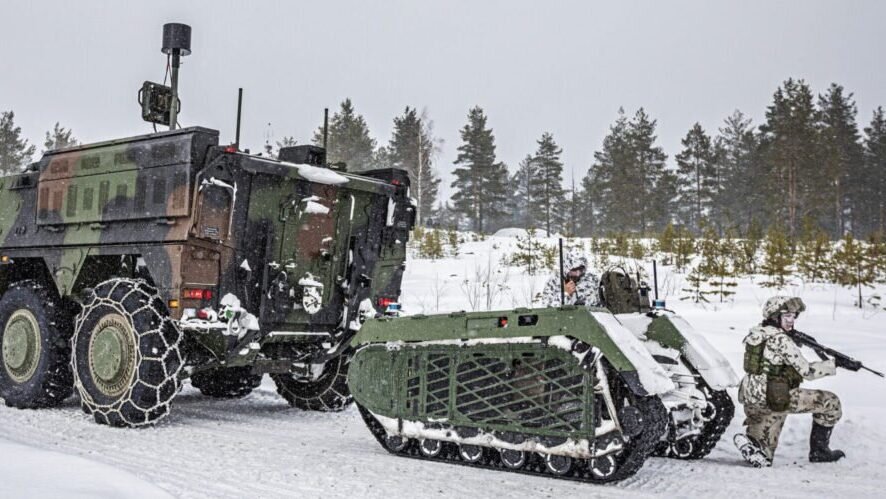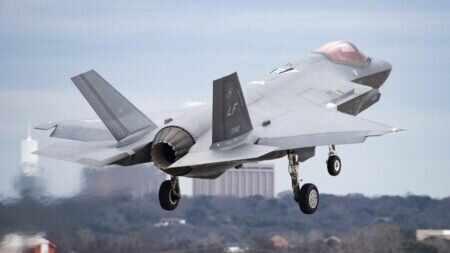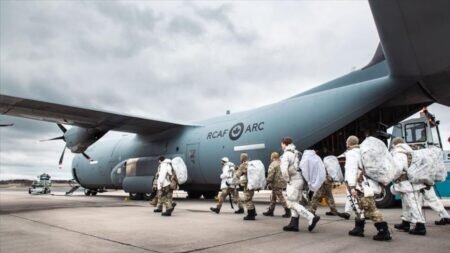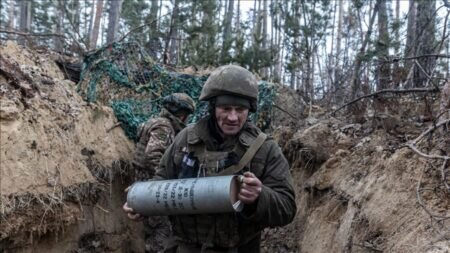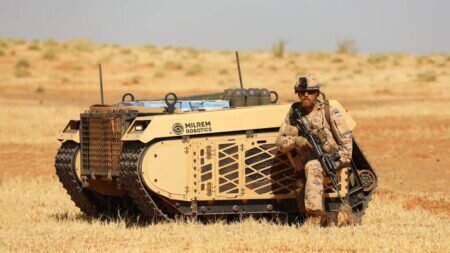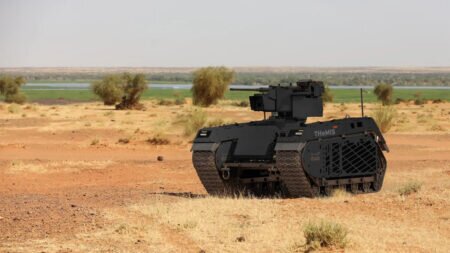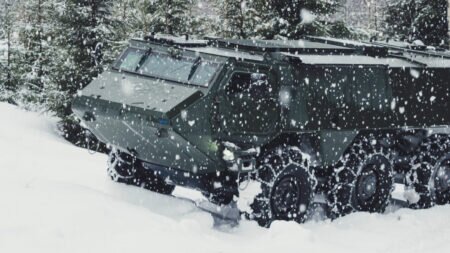The integrated Modular Unmanned Ground System (iMUGS) project consortium demonstrated the usage of unmanned military systems in arctic conditions in Finland.
The demonstration was led by Bittium in cooperation with Milrem Robotics, Krauss-Maffei Wegmann GmbH & Co. KG (KMW) and Latvijas Mobilais Telefons SIA (LMT). The iMUGS consortium oversees a 32.6 MEUR project with the aim of developing the European standard unmanned ground system (EUGS).
The event was organized in collaboration with the Finnish Defence Forces, and it was supported by selected technology providers FY-Composites Oy, Senop Oy, Centria and Saab Grintek Technologies. Approximately 100 international guests from 14 countries attended the event.
The objective was to demonstrate the ability of the iMUGS system – utilizing Milrem Robotics’ THeMIS UGV and various payloads – to assist the infantry in demanding and high-threat environments under arctic conditions. The iMUGS communication solution, provided by Bittium, supports both manned and unmanned operations integrating unmanned ground vehicles (UGVs) and unmanned aerial vehicles (UAVs) with the troops in the same secure network and deploys flexibly both tactical and commercial communication resources. Command and control/battle management systems and mission-oriented payloads were also integrated with the vehicle platform. This complete UGV solution supports manned-unmanned teaming in various applications and situations.
In the demonstration, two Milrem Robotics’ THeMIS UGVs were deployed to a reconnaissance mission. KMW’s Boxer Armoured Personnel Carrier (APC) was used as a command centre from where one of the UGVs was operated in Beyond Line of Sight (BLOS) mode with Bittium Tactical Wireless IP Network providing the control and command connections. The second UGV was operated in Line of Sight (LOS) mode with a portable controller and Bittium Tough SDR radios providing the control and command connections. The ISR and Signal Intelligence sensor feed including live video streams from a UAV and Senop’s LILLY target designator was relayed and incorporated into LMT’s Viedsargs Battle Management System (BMS) as well as screens at the command post.
Detection of the enemy target designator was made possible through the integration of SAAB Grintek’s Laser Warning System (LWS) onto one of the THeMIS UGVs. The alerts from the LWS were sent through a datalink to the BMS. The communication network was continuously monitored with the Bittium TAC WIN Network Manager tool. The Boxer APC was also used as a relay node to connect the UGVs to the command post through the Bittium Tactical Wireless IP Network. This completed the network-centric operations concept involving the teaming of manned and unmanned assets on the ground and in the air.
“The demonstration once again proved the excellent performance and capabilities of Bittium’s tactical communications system and the whole iMUGS system. The iMUGS consortium is paving the way towards the future of unmanned systems supporting European troops and providing enhanced situational awareness and Bittium is excited to be part of the project,” says Jari Sankala, Senior Vice President of Bittium’s Defense & Security. “The iMUGS cooperation is perfectly showing and underlining the ability of European countries to create demanding defence solutions in multinational cooperation.”
“The demonstration in Finland, performed under arctic weather conditions, proved that unmanned ground systems are reliable and necessary in developing military capabilities to operate even in such harsh conditions. Milrem Robotics’ THeMIS performed excellently in combination with Bittium communication systems which provided an excellent and flexible way to build a mesh network supporting autonomous and remote-controlled UGV missions,” said Kuldar Väärsi, CEO of the iMUGS project coordinator Milrem Robotics.
The demonstration organized in Finland was one of six demonstrations organized by the iMUGS project.
About the iMUGS project
iMUGS is a 13-party collaboration focused on developing a modular and scalable architecture for hybrid manned-unmanned systems. The parties involved are Milrem Robotics (project coordinator), Latvijas Mobilais Telefons (LMT), Talgen Cybersecurity, Safran Electronics & Defense, NEXTER Systems, Krauss-Maffei Wegmann, Diehl Defence, Bittium, Insta Advance, sol.one, dotOcean, GMV Aerospace and Defence, and the Royal Military Academy of Belgium.
The aim of the project is to standardize a European-wide ecosystem for aerial and ground platforms, command, control, and communication equipment, sensors, payloads, and algorithms. The project addresses challenges such as enhanced interoperability, increased situational awareness, and faster decision-making.

